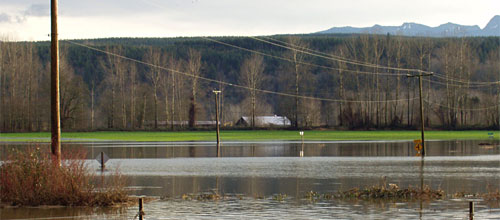GMS Products. Land Reclaimer

Benefits
The GreenMarket Solutions Land Reclaimer Bioremediation Process is a cost-effective, in-situ method for the bioremediation and return of hydrocarbon-contaminated soils to their natural state. Land Reclaimer has been laboratory-tested and is environmentally-safe to soil and groundwater. Application of Land Reclaimer can play a vital role in remediation projects, in that it:
- Cleans contaminated soil, both in-situ or ex-situ. Doing the process ex-situ offers greater control, whereas in-situ offers the ability of cleaning up soils in difficult to access areas, controlling project costs.
- Creates a mild biodegradation that attacks dead organic matter, including all petroleum-based materials, such as fuels, pesticides, herbicides, termiticides, and many other derivatives.
- Creates a favorable environment for native bacteria growth, which continues to clean the soil even after the contamination is eradicated, leaving carbon dioxide, ash, and water – safe by-products.
- Cleans up groundwater, eliminating concerns of groundwater discharge during de-watering.
What differentiates our process from other bioremediation processes is time. We are able to clean-up soils in 4 to 6 weeks.
GMS Land Reclaimer
The GMS Bioremediation Process utilizes GreenMarket Solutions Land Reclaimer, GMS’ proprietary product. It is an on-site, in-place approach to the recovery of hydrocarbon-contaminated soils that also cleans up groundwater.
Characteristics of Contaminated Soil
When soil becomes contaminated with petroleum based products such as gasoline, diesel or aviation fuel, the following undesirable conditions occur:
- Soil particles are coated with contaminant.
- Petroleum vapors displace oxygen in the soil; the lack of oxygen in contaminated soil produces an anaerobic condition.
- Anaerobic microbial digestion of hydro carbon is extremely slow. These contaminants create an environmental hazard to the public health as well as possible fire danger.
Contaminants migrate, threatening the groundwater. They also emit toxic vapors into the atmosphere, adding to air pollution.
Alternative Clean Up TechnologiesTraditional methods of cleanup involve removing soil to an area where it can be mechanically aerated, a process which, because of slow evaporation rates and the anaerobic condition, takes months at best. This method of cleanup threatens ground water and constitutes polluting the air. Local enforcement agencies are aware of the problems that are involved when hydrocarbon contaminated soil is aerated and are not approving permit applications for soil aeration. This compels responsible parties to search for other alternatives.
The most common alternative is the hauling of contaminated soil by a licensed hazardous waste hauler to a landfill designated as a hazardous waste disposal site, creating a new problem with the contamination. This alternative is extremely costly because of trucking fees, disposal cost, and ultimately, costs of insurance for all parties involved with handling hazardous materials. Despite these efforts, the hazardous waste generator DOES NOT RELINQUISH RESPONSIBILITY for future cleanup of the disposal site.
Other Clean Up Processes Used
Vapor Extraction: Mechanically removing vapors from the soil, either “in place” or containerized in an above-ground facility; this creates possible fire hazards and generates additional toxic waste in the exhaust filters of these facilities.
Enhanced Biodegradation: The soil is contained above ground and microorganisms are introduced to the controlled system. This method is very effective where space is available and time is not a factor. Problems arise when this technology is utilized. The controlled system can malfunction, creating hazardous spills, fire dangers and the unbalanced proliferation of microorganism activity. The technology is very difficult to control in ‘in situ’ or underground applications.
GMS Bioremediation Process
Mixed with water and then applied by tank sprinkler or an injection system to the contaminated soil, GMS Land Reclaimer causes the proliferation of indigenous microorganisms. Immediately upon contact, organic volatile aromatics are put into solution, eliminating emissions and odors. In a matter of hours, the indigenous microorganisms begin consuming the hydrocarbons within the system, further enhancing proliferation. The estimated time of cleaning the soil depends on the oxygen level within the soil particle. A reduction in the contaminant can be realized within twenty-four (24) hours.
What differentiates our process from other bioremediation processes is time. We are able to clean-up soils in 4 to 6 weeks, done in-situ or ex-situ. Performing the process ex-situ offers greater control, whereas in-situ offers the ability of cleaning up soils in difficult to access areas.
The GMS Bioremediation Process’ Land Reclaimer solution conditions the soil for the bacterial degradation of organic contaminants. Typically hydrocarbons have an attraction to soil, especially clay, and chemically bonds to the soil. The solution helps to weaken these bonds, making the hydrocarbons readily available for the bacteria. If needed, we will add indigenous bacteria into the process.
This process has proven to work on not only hydrocarbons commonly found in fuels such as gasoline and diesel, but also on complex hydrocarbons such as PAH’s, EDTA, and chlorinated hydrocarbons. The process will also clean up ground water, which will eliminate concerns of ground water discharge during dewatering.
Notes On The GMS Bioremediation System Process
- Flash Point – Non-Flammable
- Environmentally safe!
- pH=0.5 at the concentrated form. (pH=2 when ratio of LR to water diluted for application)